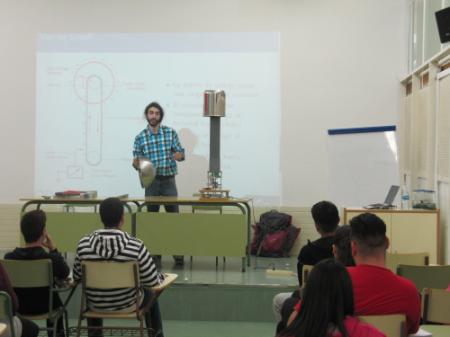Sparking the love for accelerator science
If you have to spark interest among teenagers about something they have never heard before, and as far from their everyday experience as particle accelerators, why not start with real sparks – truly massive, hair-rising, ear-cracking electric sparks?
That’s the idea that former oPAC fellow Michele Carla had when he was invited last November to the high school ‘Institut Pla de les Moreres’ in Vilanova del Camí, near Barcelona (Spain) to talk about the work he does in the synchrotron ALBA. He designed and built his own Van der Graaff generator to entertain the students with some nice sparks and introduce in the meantime the fundamentals of particle accelerators.
Everyone who studied physics has seen at least a sketch of a Van de Graaff generator in a book, but if you really want to build a working one from scratch you have to face some problems (especially if you want it to look nice). Here is Michele’s advice:
1) Design phase: Try to dimension the various components like belt length, width and speed.
2) Find the materials: The insulating column is a plastic pipe like the one used for rain gutter, the belt is a rubber band for exercise (neoprene is pretty good), the top collector is from an old pressure pot, the electric motor comes from a fan… etc. etc.
3) Solve some mechanical problems: I have never studied mechanical engineering or metal machining so this was something quite new to me. These gave me finally a good excuse to learn how to use a lathe and a milling machine, it was a nice experience.
“The first attempt was kind of a failure, but after some improvement I was able to produce some beefy spark!” says Michele. We can be sure that the students were at least electrified by the demonstration. No casualties were reported.

Michele Carla demonstrating his home-made Van de Graaff generator